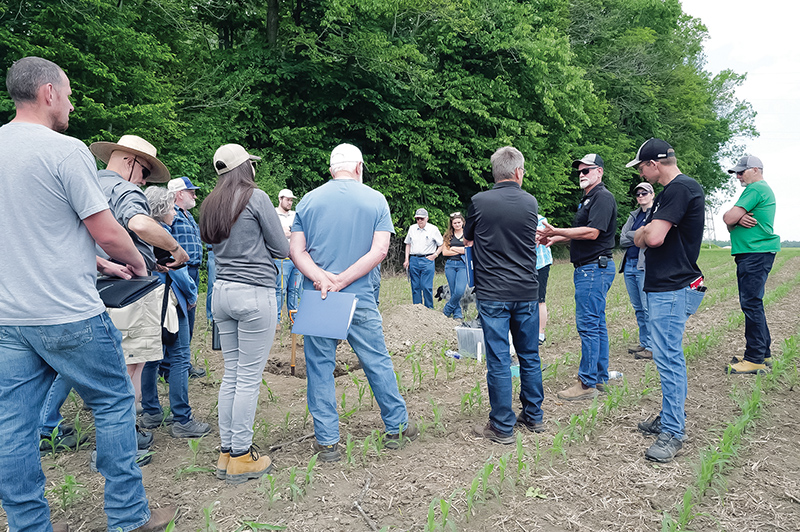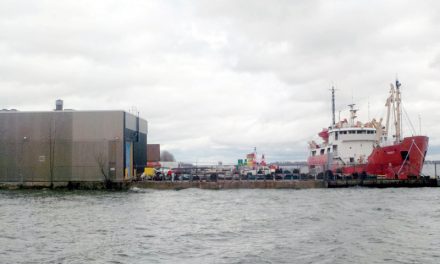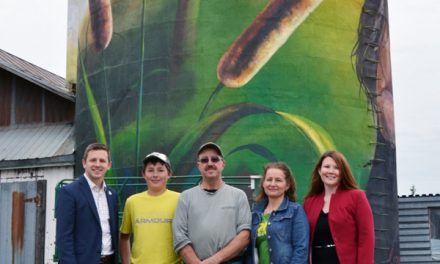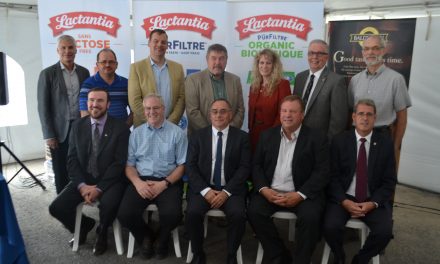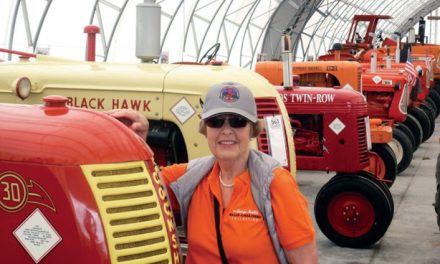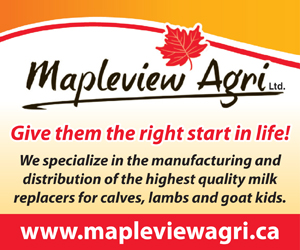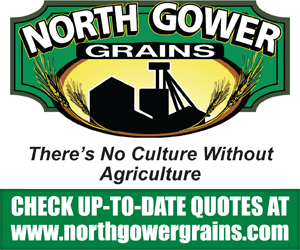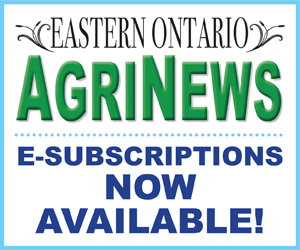Agronomist Scott Banks, with the use of a number of test holes which had been dug, explained the importance of soil samples in ensuring the best results from different types of soil. Tinkess Photo
WILLIAMSBURG – The 2025 Agri-Action Lunch and Learn soil health workshop, focusing on soil health, was hosted by ALUS Ontario East in partnership with the Raisin Region Conservation Authority and funded by various agencies. The workshop took place on the Williamsburg property of Ron and Brenda Toonders, the owners of Yolanda Farms.
The day was kicked off by Brendan Jacobs, the program coordinator for ALUS Ontario East.
ALUS is a charitable organization “that envisions a future where all farmers and ranchers produce ecosystem from nature-based solutions,” and as of Dec. 31, 2024, they have partnered with over 77 landowners and local organizations to establish 183 projects within eastern Ontario. One of these were the Toonders.
Ron Toonders shared the family’s transition to no-till farming over 25 years. “The three of us, (Ron, his wife and his son) run this place, milking 120 cows. The dairy barn is one concession north,” said Toonders. “We farm about 1200 acres, 450 of it is rented. We grow corn, beans, alfalfa, grass, a switch grass, a little bit of wheat and rye. We’ve been sort of 100 per cent no till for about 25 years.”
He explained some of the challenges they faced, including stones and the need to modify equipment, but also advantages, including reduced work and better soil health.
Toonders explained how it was a matter of trial and error as they tried to find the best methods and the best crops for their purposes. One thing that he made very clear, was his preference for switchgrass over wheat.
“Wheat is a spoiled child,” said Toonders. “It wants attention, and if you don’t give it attention, it has a temper tantrum. It does stupid stuff. So, then the straw winds up being inconsistent.
“With switchgrass, it requires almost no inputs. 20 years of breeding has made it relatively easy to establish. It used to take five years to get a good stand. Now, by year two, we have a good stand.”
With ALUS, Toonders implemented switchgrass in non-productive areas of his farm, a non-traditional option that diversifies the natural function of the farm, creating a buffer for wildlife while also helping to improve the quality of the soil for the future.
After explaining his positive experience in working with ALUS, Toonders completed his portion of the workshop and the group proceeded to take an 800 metre walk to test pits which had been prepared on a portion of the property, and the portion of the workshop presentation given by agronomist Scott Banks.
Banks explained different soil types, including muck soil and clay loam and the importance of obtaining soil samples and ensuring that they are taken from different sites, such as a no-till field and virgin soil. He also discussed the importance of cover crops and their roll in reducing erosion and increasing organic matter.
The next speaker, Hugh Metcalf, is a nutrient management specialist, and he also emphasized the importance of cover crops and the use of materials like manure and compost as a way of building organic matter. He stressed the importance of soil sampling and monitoring soil fertility to make informed decisions about nutrient management.
Next to speak was Barb Keith from the Ontario Soil and Crop Improvement Association who discussed available funding programs, including the Resilient Agricultural Landscape Program, which funds projects related to natural grassland establishment, reduced tillage, and water retention features, and the Species at Risk Farm Incentive Program, which supports best management practices for species at risk.
Matthew Windle is a program leader, research and technical services at the River Institute. His presentation focused on the Nutrient Mapping Project being conducted by the River Institute, and its role in identifying non-point sources of nutrient runoff. He explained that satellite imagery and soil samples can help to create a predictive model for identifying nutrient concentrations.
The final two speakers of the morning were Cheyene Brunet, Stewardship Coordinator and a registered professional forester with the Raisin River Conservation Authority, and Michelle Cavanaugh, team lead, Special Projects at South Nation Conservation. They spoke about the Eastern Ontario Farm Stewardship Collaborative, and the goal of making it easier for landowners to access funding and obtain resources for stewardship projects, tree planting programs and the ability to reach out for assistance with project planning, design and implementation.
With a lot of ground covered, both literally and figuratively, the group headed back from the field to enjoy a pizza lunch and an opportunity for more questions, networking and a chance to share thoughts on a morning well spent and looking forward to an opportunity to do it again soon.

